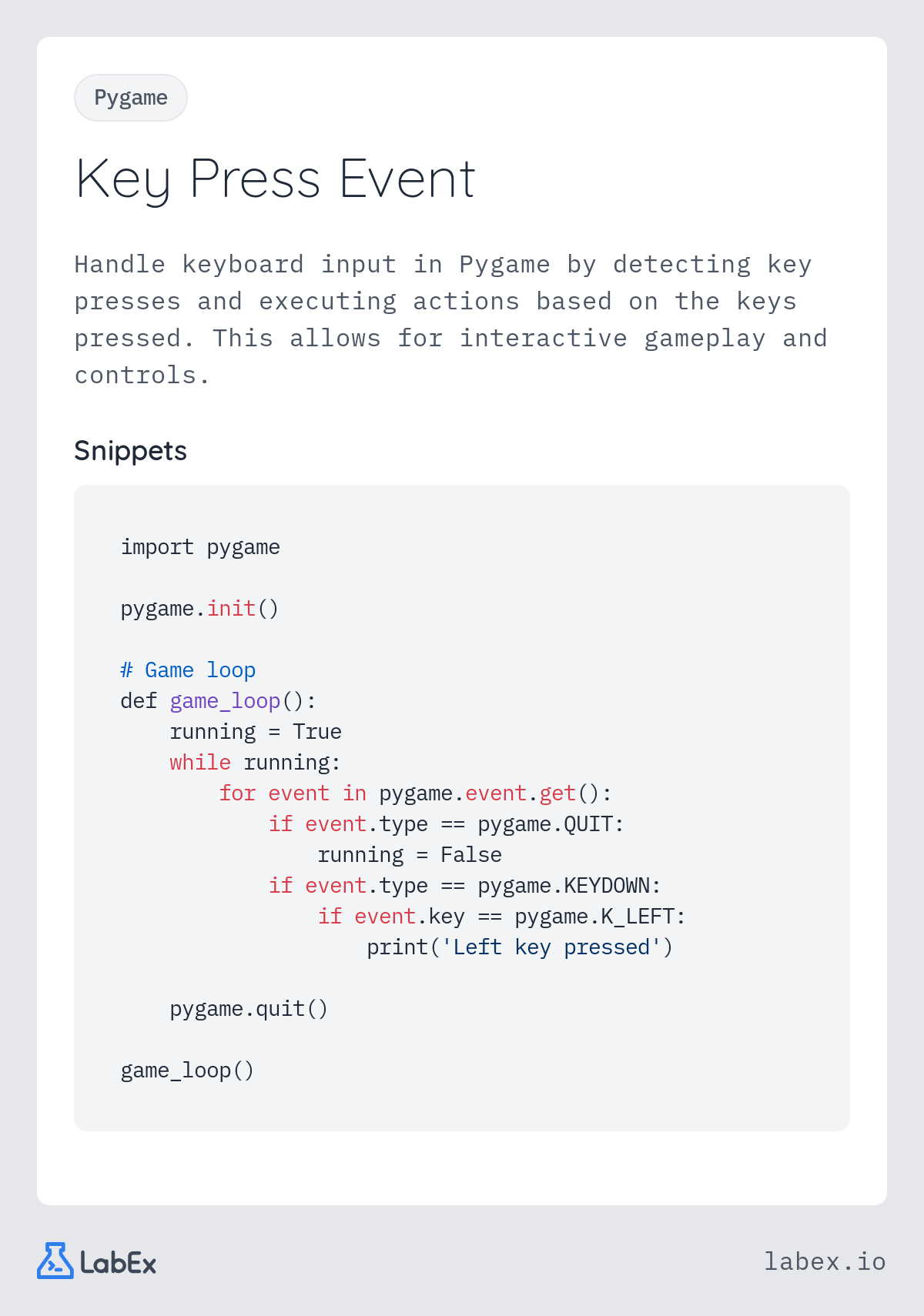
Key Press Event
Handle keyboard input in Pygame by detecting key presses and executing actions based on the keys pressed. This allows for interactive gameplay and controls.
Explore our curated collection of programming flashcards. Each card contains practical examples and code snippets to help you master programming concepts quickly.